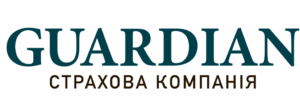
PJSC Vinnytsia Dairy Plant Roshen, part of the Roshen confectionery corporation, will pay shareholders UAH 86.394 million in dividends from net profit for 2024.
“To pay annual dividends on the company’s ordinary registered shares in the amount of UAH 86 million 393 thousand 928.60 UAH from net profit for 2024 at a rate of 461.58 UAH per ordinary registered share,” according to the decision of the general meeting of shareholders published in the information disclosure system of the National Securities and Stock Market Commission (NSSMC) on Friday.
Dividends will be paid directly to shareholders within a period not exceeding six months from the date of the general meeting’s decision to pay dividends.
In addition, the shareholders extended the term of office of the supervisory board in its entirety: Volodymyr Yarandin was re-elected as chairman, and Serhiy Zaitsev and Valentina Vyshnevska retained their positions as members of the board. Yarandin and Zaitsev represent the interests of the shareholder
Ukrainian Confectionery Holding LLC, while Vyshnevska represents the state-owned enterprise Roshen Confectionery Company.
At the same time, the shareholders gave their preliminary consent to the private joint-stock company to enter into major transactions related to the issuer’s financial and economic activities, the subject of which may include, in particular, the purchase or sale of works or services whose value exceeds 25% of the value of assets according to the latest annual financial statements, with a maximum total value of UAH 10 billion. The transactions may be carried out within one year from the date of such decision.
PJSC Vinnytsia Milk Plant Roshen was founded in 1999 in Vinnytsia. The milk plant is the main supplier of raw materials for the corporation’s factories. The plant has a capacity to process 600 tons of milk per day and produce up to 50 tons of dry milk products, up to 30 tons of butter, up to 10 tons of milk fat, and up to 75 tons of condensed milk. Raw materials are supplied from 10 regions of Ukraine, for which the plant has its own motor transport enterprise.
The plant’s products are exported to more than 50 countries around the world, namely Eastern Europe, Asia, North America, and Africa.
According to Opendatabot, in 2024, the plant increased its revenue by 20.6% to UAH 4.322 billion, increased its net profit by 12.9% to UAH 226.023 million, and reduced its debt obligations by 1.1% to UAH 234.29 million. The company’s assets are estimated at UAH 1.221 billion. The plant employs 228 people.
The authorized capital is UAH 9.358 million.
The ultimate beneficiary of the company is Oleksiy Poroshenko, the son of the fifth president of Ukraine, Petro Poroshenko.

On May 12, Ukrkhimtransammiak (Kyiv) announced its intention to conclude a tender agreement with Guardian Insurance Company (Kyiv) for compulsory motor third-party liability insurance for owners of land vehicles (OSAGO). According to the Prozorro electronic procurement system, the company’s bid was UAH 202,409 thousand against the expected cost of services of UAH 350,780 thousand.
The tender was also participated in by insurance companies Oranta with an offer of UAH 202,410 thousand and Kraina with an offer of UAH 242,4 thousand.
SK Guardian has been operating in the insurance market since 2007. According to the NBU, it is one of the top 15 risk insurance companies in Ukraine in terms of premiums collected in the first nine months of 2024.
It is a member of the presidium of the League of Insurance Organizations of Ukraine. Since January 2020, it has been a full member of the Motor (Transport) Insurance Bureau of Ukraine (MTIBU) and is authorized to issue Green Card policies.
As reported, Guardian Insurance Company won a similar tender a year ago.
Guardian Insurance Company, INSURANCE, Motor transport, Ukrkhimtransammiak

Moderate rain is expected on Sunday, May 18, in the eastern and northeastern regions of Ukraine, and during the day in the Carpathian region, with light rain in some areas and thunderstorms in others, according to the Ukrainian Hydrometeorological Center.
The wind will be southwesterly and westerly, 7-12 m/s, with gusts of 15-20 m/s in the Carpathians during the day. Nighttime temperatures on the right bank will be 4-9°C, on the left bank 8-13°C; daytime temperatures will be 12-17°C, in the southeast of the country 18-23°C.
In the Carpathians, light snow and rain at night, moderate during the day; nighttime and daytime temperatures 0-5°C.
In Kyiv on May 18, light rain in some areas. Wind from the west, 7-12 m/s. Nighttime temperatures 6-8°C, daytime temperatures around 15°C.
According to the Boris Sreznevsky Central Geophysical Observatory, in Kyiv, for the entire period of meteorological observations since 1881, the highest temperature on May 18 was in 1909 (32.1°C), and the lowest was in 1941 (3.0°C above zero).
On Monday, May 19, there will be light rain in some parts of Ukraine, with moderate rain in the afternoon on the left bank and in the southwestern part, and thunderstorms in some places.
The wind will be mainly southwesterly, shifting to northwesterly in the western regions, 7-12 m/s; during the day in the south and east of the country, gusts of 15-20 m/s are possible in some places. Nighttime temperatures will be 4-9°C, in the south and east of the country 7-12°C; daytime temperatures will be 12-17°C, in the southeast of the country up to 20°C.
In the Carpathians, there will be light snow and rain in some places at night and moderate snow and rain during the day; nighttime and daytime temperatures will be 0-5°C.
In Kyiv on May 19, there will be light rain in some places. The wind will be southwesterly, 7-12 m/s. The temperature at night will be 6-8°C, and during the day 14-16°C.

Shareholders of PJSC National Joint Stock Insurance Company Oranta (Kyiv) plan to allocate UAH 40.667 million of net profit for 2024 to pay dividends.
This is stated in the information system of the National Securities and Stock Market Commission (NSSMC) in the draft decisions of the company’s shareholders’ meeting scheduled for May 19.
During the meeting, shareholders also plan to approve the amount of dividends per ordinary registered share in the amount of UAH 0.20 and determine that the payment of dividends will be carried out through the depository system of Ukraine in accordance with the procedure established by the supervisory board of NASK Oranta.
As reported, NASK Oranta increased its premium income by 54% in 2024 to UAH 2.35 billion compared to the same period last year, while the volume of payments increased by 22% to UAH 155.2 million.
Over the past year, the company paid out UAH 657 million in claims, which is 25% more than in 2023. The increase in payments is associated with the growth of the portfolio and the number of settled insurance events.
Thus, UAH 487 million (+34%) was paid out under MTPL policies, and UAH 99 million under Green Card agreements. The volume of premiums from legal entities increased by 26% last year.
Its profit amounted to UAH 157 million thanks to an effective tariff policy and expansion of the customer base. Insurance reserves grew by 44% to UAH 1.35 billion, ensuring the insurer’s financial reliability.
NASK Oranta is the successor to Ukrderzhstrakh, founded on November 25, 1921, and has been operating in Ukraine for over 100 years.
The company has been a full member of the MTIBU since 1994 and a member of the Nuclear Insurance Pool since 2003.
The insurer’s main shareholder is the Ukrainian business group DCH. The company has 33 licenses for compulsory and voluntary types of insurance, its network includes over 400 representative offices, and its agency network brings together over 2,000 insurance experts.

In January-April of this year, Ukraine increased exports of processed cast iron in physical terms by 37.4% compared to the same period last year, to 574,057 thousand tons from 417,941 thousand tons.
According to statistics released by the State Customs Service (SCS) on Tuesday, during the period in question, exports of pig iron in monetary terms increased by 46% to $226.282 million.
Exports were mainly to the US (83.05% of shipments in monetary terms), Italy (11.34%), and Poland (2.7%).
In the first four months of the year, the country imported 29,000 tons worth $55,000 from Brazil (68.52%) and Germany (31.48%), while in January-April 2024, 15 tons of pig iron worth $35,000 were imported.
As reported, on March 12 of this year, in accordance with a decision by President Donald Trump, the US began imposing a 25% tariff on imports of Ukrainian steel products, except for pig iron.
In 2024, Ukraine reduced exports of processed pig iron in physical terms by 3.4% compared to 2023, to 1 million 290.622 thousand tons, and in monetary terms by 6.1%, to $500.341 million. Exports were mainly to the US (72.64% of shipments in monetary terms), Turkey (8.03%), and Italy (7.30%).
In 2024, the country imported 38 tons of pig iron worth $90 thousand from Germany, while in the same period of 2023, it imported 154 tons of pig iron worth $156 thousand.